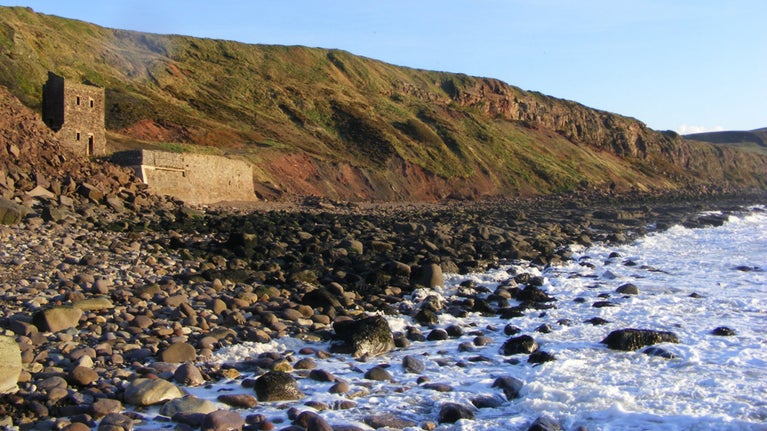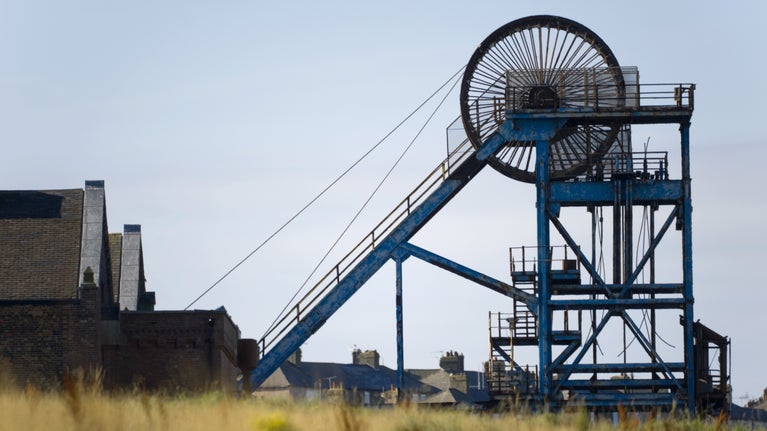
Discover more at the Whitehaven Coast
Find out how to get to the Whitehaven Coast, where to park, the things to see and do and more.

The Whitehaven Coast offers more than just sea views and a colourful coast. From Romans to Vikings, miners to sailors, there have been plenty of human influences leaving hidden gems of history here too. Discover coalmines, a fog horn station and an eighteenth-century harbour.
High up on the cliffs at North Head between Whitehaven and St Bees is the St Bees lighthouse and nearby, right on the cliff edge, you can see St Bees fog horn station.
For many years the fog horn station on St Bees Head provided an audible warning to ships as they approached the headland. With fog closing in and spray obscuring the visibility of the lighthouse this would have been a vital signal to mariners in the days before GPS and digital maps.
Now the fog horn at St Bees is silent, having been decommissioned, but the building remains, quietly standing guard over the head. Inside, the speakers and machinery remain in place creating a nostalgic and somewhat eerie atmosphere.
With unbroken views over a wide expanse of sea towards the Isle of Man, smells drifting up from the seabirds nesting on the cliffs, the sound of the waves crashing against the base of the cliffs 300 feet below and wind whistling through your jacket, a trip to the fog horn station will really spark all of your senses.
South of the Haig Pit car park you will find the remains of Saltom Pit, the first under-sea coal mine in England. Dating from 1729, the mine operated until 1848. Once consisting of a large complex of buildings including houses, shops and boiler sheds, today the remains of a winding engine house, chimney and gin circle can be seen.
The site is currently closed to public access by the landowner however you can find out more about the pit from an information board at the top of the track.

A short walk north brings you to the site of King Pit. Sunk 1750, by 1793 this was the deepest manmade pit in the world, showcasing the power of steam winding technology that allowed mines to become deeper and more profitable. A small stone cairn marks the site of King Pit.
Further on the coast you will come to the ‘candlestick’ part of Wellington Pit. Sunk in 1838 and finally closed in 1932, the Wellington Pit was the scene of numerous accidents, including a major disaster in May 1910 which claimed 136 lives.
The ‘candlestick’ chimney was designed to impress and is a landmark for the area. Also look out for the white crenellated building nearby, which was the entrance lodge for the pit.
Sunk in 1914 and named after Douglas Haig, the First World War commander, production started here in 1916 and operated for 70 years. The buildings remain as an icon to the industrial development of coal mining, now just a shadow of its former self, however you can at least get a feel for the landscape that once was.

From Haig Pit you can take in the views of the harbour. A fishing village until the 17th century, the old quay at the Harbour dates from the 1630s, built by Sir Christopher Lowther after he purchased the estate and decided to use Whitehaven as a port for exporting coal.
The town boomed in the 18th century with further quays built as Whitehaven became a Georgian town growing off the mineral riches of the area. It would become an international trading hub and industrial hotspot playing a key role in global maritime trading.

Find out how to get to the Whitehaven Coast, where to park, the things to see and do and more.

There’s lots to discover on the Whitehaven Coast, from carpets of colourful wildflowers to thousands of nesting seabirds. Find out more.

Learn about people from the past, discover remarkable works of art and brush up on your knowledge of architecture and gardens.